Text

Common waterbuck (Kobus ellipsiprymnus ellipsiprymnus)
This subspecies of waterbuck is found in southeastern Africa. Waterbucks live in grasslands, but only in areas close to rivers and lakes, so their habitat is restricted. Also… apparently male antelope often confirm females are “in season” by sniffing their urine. I had to read that, so now you do, too.
#markhors-menagerie#animal facts#animals#biology#fun facts#ungulates#even toed ungulates#ruminants#bovidae#antelope#waterbuck#Nile waterbuck
2 notes
·
View notes
Text

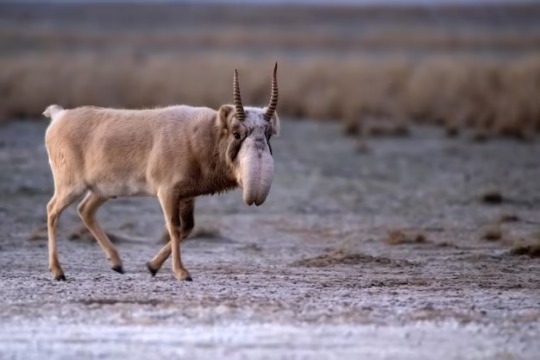
Saiga antelope (Saiga tatarica)
Saiga don’t only look weird, but are found in the last place you would expect antelope to be- the cold, dry Eurasian steppe. Their large nose helps filter out dust and warm air before it reaches their lungs, and they also develop a warm, grey-brown coat in the wintertime. During the last ice age, saiga antelope were found across the cold northern steppe, from Britain and Mongolia to Alaska. Unfortunately, they are now critically endangered, found only in a few refuges in Kazakhstan and the surrounding countries.
#markhors-menagerie#animal facts#animals#biology#fun facts#ungulates#even toed ungulates#ruminants#bovidae#antelope#saiga antelope
55 notes
·
View notes
Text
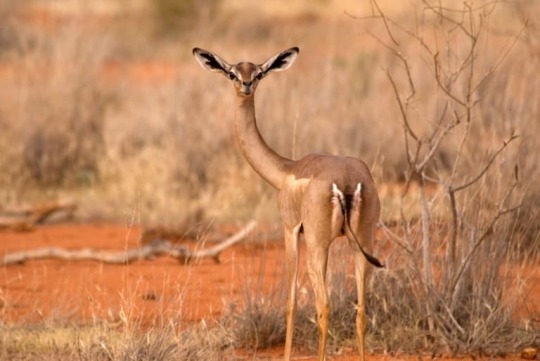
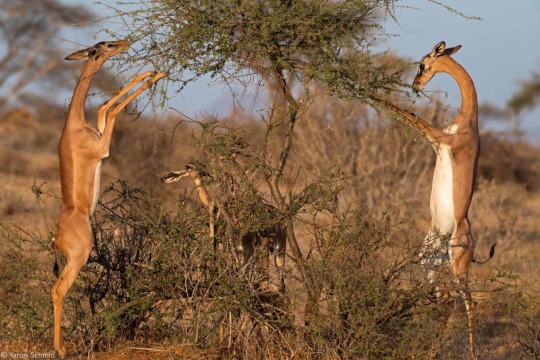
Gerenuk (Litocranius walleri)
Also known as the giraffe gazelle, the gerenuk is one of the only antelope specifically adapted for feeding on trees and high bushes. Between their long neck and their modified back vertebrae which allow them to comfortably stand bipedally, they can reach 6.5 feet (2m) above the ground in search of food. They live in brushland environments throughout east Africa.
#markhors-menagerie#animal facts#animals#biology#fun facts#ungulates#even toed ungulates#ruminants#bovidae#antelope#gerenuk
8 notes
·
View notes
Text
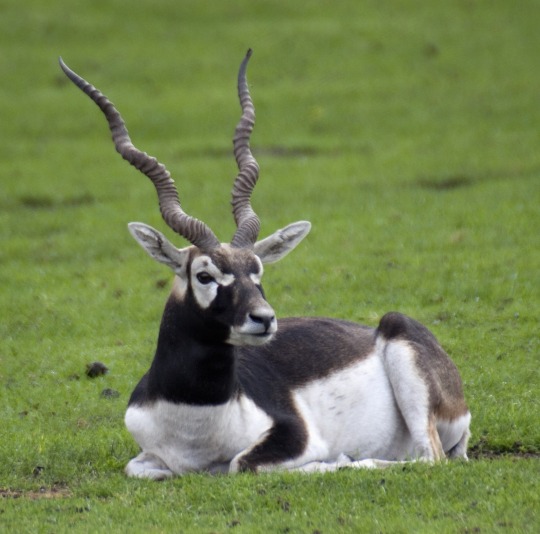
Blackbuck (Antilope cervicapra)
These striking antelope make their home in the grasslands of India and Nepal, and were once also found in Bangladesh, Afghanistan, and Pakistan. They have also been introduced to the US and Argentina. Males often sport a dark brown colour, while females are the light brown more typical of mid-sized antelope.
#markhors-menagerie#animal facts#animals#biology#fun facts#ungulates#even toed ungulates#ruminants#bovidae#antelope#blackbuck
4 notes
·
View notes
Text
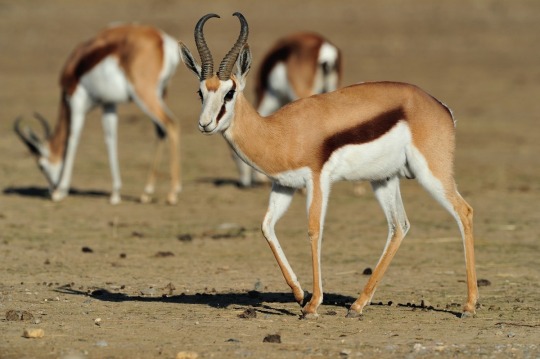
Springbok (Antidorcas marsupialis)
Found in the deserts and dry grasslands of Southern Africa, the springbok is adapted to get all the water they need from the plants they eat. They are one of the fastest mammals on earth, able to reach speeds of up to 55 mph (88kmh), and are one of many ungulates to engage in a type of leaping called pronking or stotting, in which the animal moves all four legs in tandem. Decades ago, when springboks were much more numerous, they used to form giant migrating herds in times of drought which were millions strong and could take days to move through a town!
#markhors-menagerie#animal facts#animals#biology#fun facts#ungulates#even toed ungulates#ruminants#bovidae#antelope#springbok
3 notes
·
View notes
Text

Impala (Aepyceros melampus)
Also known as the roibok, these lithe antelope are found in woodlands and savannas across southeastern Africa. They eat a variety of vegetation, as well as fruit. Impalas have impressive leaping abilities- they can leap up to 9.8 feet (3m) into the air and across distances of 33 feet (10m). They also have a unique tooth arrangement which they use to groom each other, an important part of social bonding.
#markhors-menagerie#animal facts#animals#biology#fun facts#ungulates#even toed ungulates#ruminants#bovidae#antelope#impala#roibok
24 notes
·
View notes
Text

Klipspringer (Oreotragus oreotragus)
These tiny antelope are well-adapted for the dry, rocky terrain they call home, with thick fur that keeps them warm at high altitudes and cushions their falls. They stand on the very tips of their bizarre hooves, allowing a goat-like effective grip on rocks. They can be found in mountainous regions from the Horn of Africa all the way down to the southern tip of the continent, and are most active at night-time.
#markhors-menagerie#animal facts#animals#biology#fun facts#ungulates#even toed ungulates#ruminants#bovidae#antelope#klipspringer
4 notes
·
View notes
Text

Yellow-backed duiker (Cephalophus silvicultor)
The most widespread species of duiker, these can be found in forests across tropical Africa. They eat mostly fruits, but also leaves, roots, and occasionally small animals. The word duiker comes from the Dutch and Afrikaans word for ‘diver’, which refers to these antelopes’ habit of diving into the underbrush when threatened.
#markhors-menagerie#animal facts#animals#biology#fun facts#ungulates#even toed ungulates#ruminants#bovidae#antelope#duiker#yellow-backed duiker
4 notes
·
View notes
Text
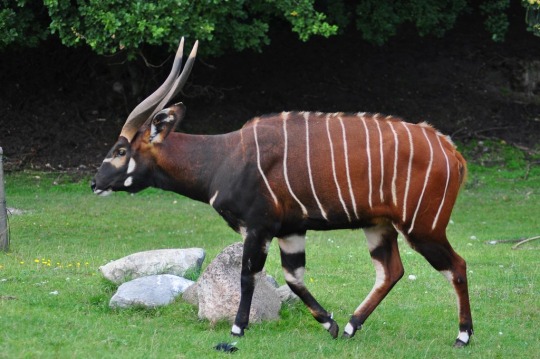
Bongo (Tragelaphus eurycerus)
This brightly-coloured antelope is found in tropical forests across portions of equatorial Africa. They have a giraffe-like prehensile tongue which allows them to grasp their food, and will occasionally feed on bark and even burnt wood. Like many antelope, the mountain bongo subspecies is greatly endangered, and may soon be extinct in the wild.
#markhors-menagerie#animal facts#animals#biology#fun facts#ungulates#even toed ungulates#ruminants#bovidae#antelope#bongo
3 notes
·
View notes
Text
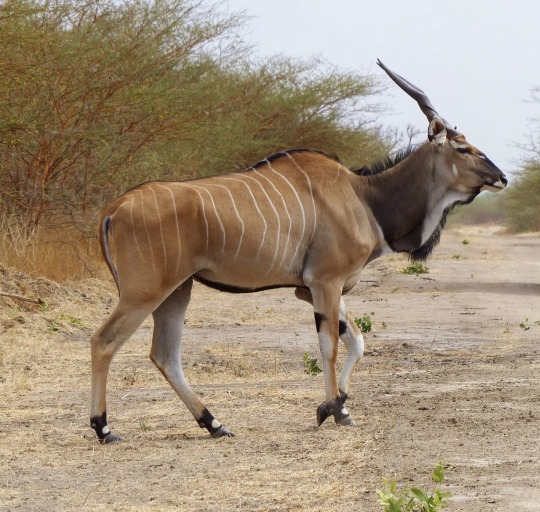
Giant eland (Taurotragus derbianus)
The largest species of antelope in the world, giant eland live in woodlands, savanna, and even deserts of tropical Africa. The two subspecies are found in western and central Africa, respectively. Oddly, female giant elands have one more chromosome than males, because the Y-chromosome has fused with one of the autosomes (karyotype). Because of their adaptations for survival in a dry climate, the related common eland is sometimes farmed instead of cattle!
#markhors-menagerie#animal facts#animals#biology#fun facts#ungulates#even toed ungulates#ruminants#bovidae#antelope#eland#giant eland
6 notes
·
View notes
Text

Nilgai (Boselaphus tragocamelus)
The nilgai is the largest antelope in Asia, and it’s quite enigmatic- its scientific name actually translates to ‘cow-deer goat-camel’! Nilgai live in shrublands and grasslands across the Indian subcontinent, and are often seen as pests for the damage they do to farms. They have also become an invasive species in Texas. Despite being known to run up to 2,300 ft (700m) away if they feel threatened, they will also readily fight other nilgai with their necks and horns.
#markhors-menagerie#animal facts#animals#biology#fun facts#ungulates#even toed ungulates#ruminants#bovidae#antelope#nilgai
15 notes
·
View notes
Text

Four-horned antelope (Tetracerus quadricornis)
These tiny antelope are one of the only hoofed mammals to have four horns, as well as one of the smallest! They live in India and Nepal, and prefer areas with tall grasses or thick bushes to hide in. It’s closest living relative is ironically the nilgai, the largest antelope in Asia, although extinct relatives were once found as far away as Africa.
#markhors-menagerie#animal facts#animals#biology#fun facts#ungulates#even toed ungulates#ruminants#bovidae#antelope#four horned antelope
46 notes
·
View notes
Text
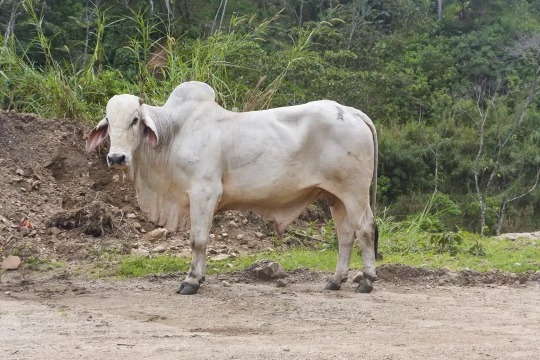
Zebu cattle (Bos indicus)
Identifiable by their shoulder hump, neck dewlap, and large, floppy ears, zebu are a unique species (or subspecies) of cattle originating from India. They were domesticated from the now-extinct auroch some 8000 years ago. Thanks to their adaptations for hot, dry climates, zebu-derived breeds are cultivated in Brazil, Madagascar, Australia, and elsewhere.
#markhors-menagerie#animal facts#animals#biology#fun facts#ungulates#even toed ungulates#ruminants#bovidae#Bovini#cattle#zebu cattle
2 notes
·
View notes
Text

Taurine cattle (Bos taurus)
Domesticated from aurochs about 10,000 years ago in the Middle East, taurine cattle are now some of the most populous and iconic animals in the world. They are of course used in the beef and dairy industries, for leather, and trained cattle called oxen are also used to plough fields in some parts of the world. However, with more than 1.5 billion cattle living across the world, the space needed to house and feed so many animals combined with the methane gas they produce means that they’re unfortunately having a substantial environmental impact.
#markhors-menagerie#animal facts#animals#biology#fun facts#ungulates#even toed ungulates#ruminants#bovidae#Bovini#cattle#taurine cattle
7 notes
·
View notes
Text

†Auroch (Bos primigenius)
Art credit: José Antoni
These giant prehistoric cattle lived in a variety of habitats during the ice age, from Europe, North Africa, and the Middle East, to India and East Asia. They were a significant animal to hundreds of cultures, featuring in European cave art, Babylonian murals, ancient Egyptian temples, and more. But over thousands of years they declined in region after region, and finally went extinct in 1627. But their effect on human history did not end there- aurochs were domesticated at least twice, and their descendants are modern cattle!
#markhors-menagerie#animal facts#animals#biology#fun facts#palaeontology#prehistoric animals#ungulates#even toed ungulates#ruminants#bovidae#Bovini#cattle#auroch
28 notes
·
View notes
Text
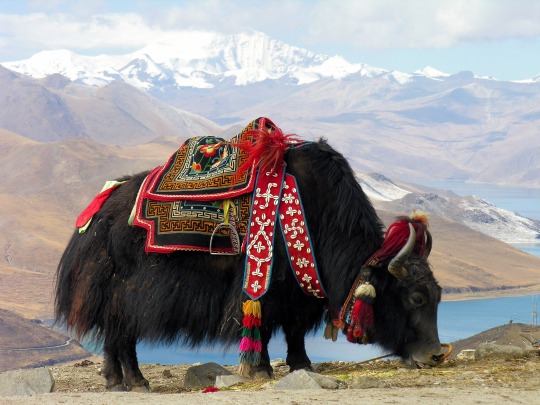
Domestic yak (Bos grunniens)
With a shaggy coat and a thick layer of fat, yaks are well-adapted to the cold, high-altitude region of the Tibetan plateau they call home. Domestic yaks have been used for thousands of years as beasts of burden, as well as for their milk, meat, and fur. In some of the high regions of the Himalayas, dried yak droppings are the only available fuel.
#markhors-menagerie#animal facts#animals#biology#fun facts#ungulates#even toed ungulates#ruminants#bovidae#Bovini#yak#domestic yak
9 notes
·
View notes
Text

American bison (Bison bison)
These iconic animals live on the plains of North America, migrating with the seasons to find enough grasses to eat. Their closest living relatives are the woodland-dwelling European bison. Once, American bison ranged across most of the United States, and much of Canada and Mexico. They are estimated to have numbered some 30-60 million individuals. But during the 19th century, European hunters reduced them to just a few hundred animals. Today, there are about 450,000 of them, many of which have some DNA contributed from domestic cattle, and only about 15,000 of which live in the wild- most of them are kept in commercial ranches. The conservation of the American bison is particularly important because it is integral to many Native American cultures, who suffered greatly when bison were almost hunted to extinction.
#markhors-menagerie#animal facts#animals#biology#fun facts#ungulates#even toed ungulates#ruminants#bovidae#Bovini#bison#American bison
4 notes
·
View notes